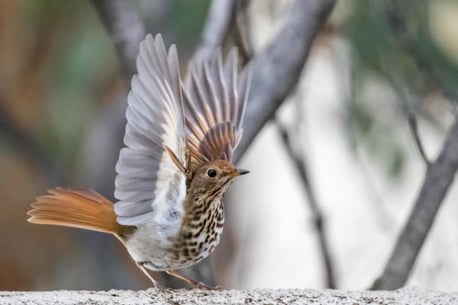Hey everyone,
Spring is in full swing up here in Vermont, and as the temperatures poke up into the 50s and 60s in the Burlington area it starts to look even more like summer. When I look around outside I see that the tender young leaves have just burst through the opposite buds of the maple trees, and the forest floor is coming alive with vibrant green sprouts from the spring ephemerals– a fancy word for wildflowers that come and go before the trees leaf out.
Another thing that’s happening is bird migration!

Having spent their winter down in the warmer, southern end of the continent, many birds are now making their way back up to their summer habitat, where they’ll make nests and raise chicks. During migration season, many birds will make their way through areas where they normally wouldn’t be, so now’s a great time to keep your eye out for birds you don’t recognize.
A good place to start is with what you do recognize. What birds are common in your area? Robins? Crows? Pigeons? Cardinals? Jays? Blackbirds? What do those birds sound like? Once you know your area’s common birds by sight and sound, finding the odd one out starts to get much easier.
You can also learn a lot from paying attention to the sounds birds are making. Right now, many birds returning to their habitats are competing for territory, building or protecting nests, or raising chicks. When you see a bird, what is it doing? Is it singing, or making another kind of sound? Is it watching attentively, or does it look relaxed? Once I noticed a chickadee several days in a row sitting around the same spot outside my window, just looking around silently. Then finally one day I noticed it fly into a tiny hole in my neighbor’s house I hadn’t noticed before, right near its perch, and deposit something from its tiny beak.
Migrating birds end up in all kinds of funny places, so keep an eye out next time you’re out walking in your neighborhood, especially in the morning and evening when birds are more active.
Happy birding!
Elliott




